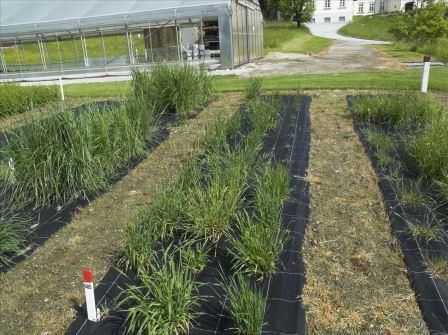Due to the associated more frequent cutting frequency and, above all, the earliest possible first cut, there is hardly any natural seeding of the grassland stocks and numerous grassland species in the more extensive locations disappear. Extensive grassland contains some of the same species spectrum as intensive grassland, but differs significantly in its genetics, which have usually adapted over centuries to the prevailing regional climate, location and management conditions. This regional genetics represents an extremely valuable resource, especially in times of climate change, which must be preserved for future generations as well as for future breeding work. Regular overseeding and reseeding to maintain or increase the performance and increase the scar density of grassland stands are now standard measures in the management of permanent grassland.
When selecting seeds, attention is paid to using high-quality varieties, usually in the form of quality seed mixtures. In addition to domestic breeding material, these varieties largely come from companies in northern Germany, Denmark, Holland, France and New Zealand. But the varieties bred in Austria are also necessarily genetically homogenized and their properties are tailored to the needs of modern grassland management. The regular sowing of this so-called “genetically alien” seed gradually leads to genetic drift, which also affects extensively managed and in-situ preserved grassland stands. Due to pollen input from re-seeded grassland stands, the original genetics of affected species of extensive grassland will increasingly be irretrievably lost in the near future without countermeasures. A collection of suitable stocks in their regional characteristics and the securing of the seed material in the Gumpenstein gene bank are therefore urgently needed. As part of the project, seeds of agriculturally important grassland grasses and herbs are collected in the 3 selected habitat types of all 10 major natural areas in Austria (G-Zert 2012), reproduced and stored ex-situ in the LFZ's freezer storage. This primarily serves to preserve genetic diversity, which is very seriously endangered by reseeding and overseeding with uniform seeds. The collected and stored material will be available in the future for breeding activities as well as regional nature conservation and landscaping measures. The data collected as part of this project will be integrated into the national directory of the publicly accessible Austrian gene bank.
Project duration: 2014 - 2023






